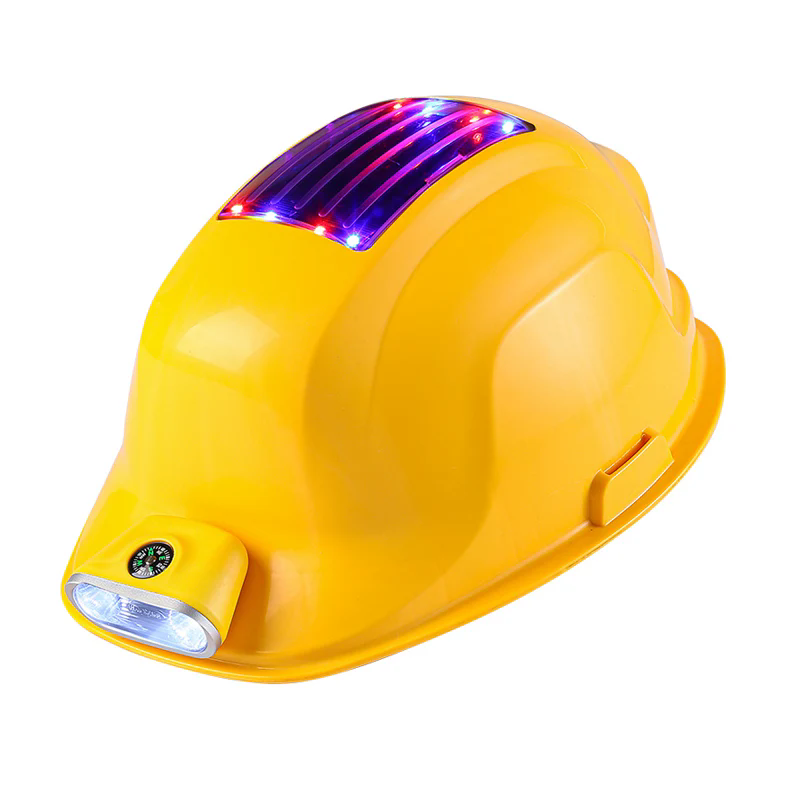Why is Wearing a Hard Hat Essential for Workplace Safety?
2024-11-12
Safety in the workplace is a top priority for employers and employees alike. Whether in construction, manufacturing, or any environment with potential hazards, proper protective gear is crucial. Among the most essential items for ensuring safety is the hard hat. But why is wearing a hard hat so critical, and how does it protect workers?
In this blog, we’ll explore the importance of hard hats, the different types available, and why they should never be overlooked when working in hazardous environments.
What is a Hard Hat?
A hard hat is a type of helmet designed to protect the head from injury caused by falling objects, debris, electrical shocks, and other impact hazards commonly found on construction sites and industrial workplaces. They are made from durable materials such as plastic, fiberglass, or a combination of materials that can absorb and distribute the force of an impact.
Hard hats are typically worn by workers in industries such as construction, mining, manufacturing, oil and gas, and even in areas like utilities and forestry. They are designed to shield the wearer from head injuries that could lead to serious, life-threatening conditions.
How Do Hard Hats Protect Workers?
The primary purpose of a hard hat is to protect the worker’s head from injuries caused by falling objects, which are especially prevalent in environments like construction sites. Hard hats are engineered to distribute the force of a blow across a wider surface area, reducing the risk of trauma to the skull and brain.
Some key ways hard hats protect workers include:
1. Impact Resistance: Hard hats are designed to withstand the impact of falling objects, tools, or equipment that could cause head injuries. This protection is essential in environments where workers are at risk of being struck by debris from heights, such as building construction or demolition.
2. Protection from Electrical Hazards: Many hard hats are equipped with electrical insulation properties, protecting workers from electrical shocks or electrocution. This is particularly important in industries dealing with high-voltage equipment or power lines.
3. Impact Absorption: The inner suspension system in a hard hat is designed to absorb the shock from a blow to the head. The suspension system creates a gap between the shell of the hard hat and the wearer’s head, reducing the risk of skull fractures and concussions.
4. Environmental Protection: Hard hats often have additional features such as chin straps or sweatbands to enhance comfort, along with vents for airflow to regulate temperature. These features contribute to the overall safety and well-being of workers in hot or physically demanding conditions.
What Are the Different Types of Hard Hats?
Not all hard hats are created equal. Different types of hard hats are designed to provide protection for different environments and hazards. They are generally classified into three types based on their protective features and use cases:
1. Type I Hard Hats: These are designed to protect the wearer from impact to the top of the head. Type I hard hats are typically used in environments where falling objects are a primary concern, such as construction sites or warehouses.
2. Type II Hard Hats: These provide more comprehensive protection, offering impact resistance from both the top and sides of the head. Type II hard hats are commonly used in industries where there is a risk of lateral impact, such as mining, forestry, and some types of manufacturing.
3. Class G (General): These hard hats provide protection against low-voltage electrical hazards (up to 2,200 volts). Class G hard hats are often used in construction or maintenance jobs where workers may come into contact with electrical components.
4. Class E (Electrical): Class E hard hats are designed for workers who may be exposed to high-voltage electrical hazards (up to 20,000 volts). These are crucial in industries like power distribution and electrical utility maintenance.
5. Class C (Conductive): These hard hats offer no electrical protection and are generally used in environments where electrical hazards are not a concern. They focus more on impact protection in low-risk settings.
Why Is Wearing a Hard Hat So Important?
1. Preventing Fatal Injuries: The most important reason to wear a hard hat is to protect the head from serious injury. Head trauma from a falling object or impact can be life-threatening, and wearing a hard hat greatly reduces the likelihood of fatalities in hazardous environments.
2. Compliance with Safety Regulations: Many workplaces are required by law to enforce the use of personal protective equipment (PPE), including hard hats. Regulatory bodies like the Occupational Safety and Health Administration (OSHA) in the U.S. mandate the use of hard hats in certain workplaces to ensure the safety of workers.
3. Preventing Long-Term Health Issues: Even non-fatal injuries, such as concussions or skull fractures, can lead to long-term health issues. Wearing a hard hat can prevent these injuries, helping workers avoid chronic pain, cognitive impairments, and long-term disabilities.
4. Worker Morale and Responsibility: Employers who provide and enforce the use of hard hats show a commitment to the health and safety of their workers. This can lead to better morale, increased productivity, and a greater sense of responsibility in workers, knowing that their safety is a priority.
When Should You Wear a Hard Hat?
Hard hats should be worn at all times when working in areas where there is a risk of head injury. Common scenarios include:
- Construction Sites: Falling debris, tools, and machinery can all pose risks to workers, making hard hats essential on these sites.
- Manufacturing Plants: In factories where equipment may fall, fly debris, or where there is a risk of impact from machinery, hard hats protect workers.
- Mining Operations: Underground environments often expose workers to potential head injuries from falling rocks and tools.
- Roadwork and Public Construction Projects: Hard hats are essential for workers in these settings to protect against risks from vehicles or falling materials.
Conclusion
Hard hats are an essential part of personal protective equipment and are vital to ensuring worker safety in environments with potential hazards. Whether protecting against falling objects, electrical shocks, or environmental dangers, hard hats are designed to reduce the risk of head injuries that could otherwise lead to serious or fatal consequences.
In industries where safety is a priority, hard hats are not optional — they are a necessity. By wearing the appropriate hard hat for your specific work environment, you are protecting not just your own safety but also contributing to a culture of workplace responsibility and care. Always make sure your hard hat is in good condition and properly fitted to maximize its protective benefits.



